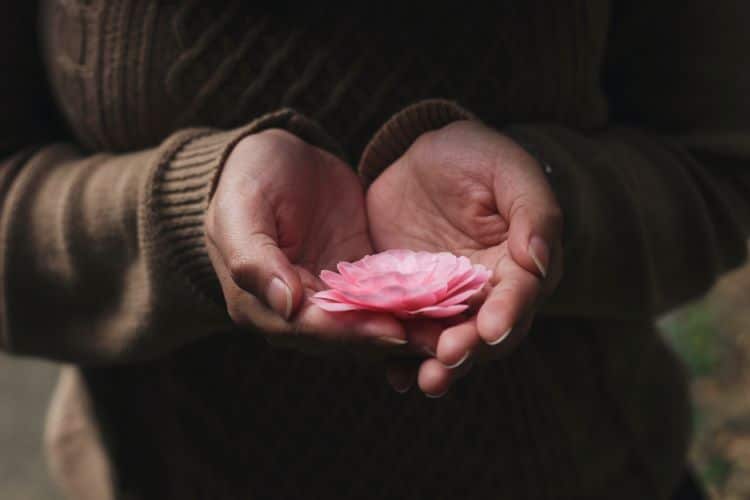After we first grow to be a mindfulness meditation teacher, it could possibly be difficult to talk from our own true voice. We may not know what our unique voice as a teacher seems like or we is perhaps caught up in attempting to emulate other teachers. These should not signs that we would not have a novel voice; they’re simply indications that there may be more self-discovery to be done. This self-discovery is crucial if we’re to blossom into our unique embodiment of what it means to show mindfulness.
What Does It Mean to Find Your Voice?
Before we start looking for our unique voice as a mindfulness teacher, it could possibly be helpful to make clear what it means to seek out one’s voice. Voice, on this sense, doesn’t check with traditional vocal elements (i.e. tone, pace, pitch). Fairly, to seek out one’s voice is to be attuned to our authenticity and to be clear on the reality that we want to share. When we’ve got found our voice, we’re in a position to share our teachings – and ourselves – with greater confidence, clarity, and ease.
Finding our voice doesn’t occur overnight. It’s a process that continually unfolds until we feel stable and secure inside ourselves. Nevertheless, even when that happens, our personal growth continues, which can shape the reality that we want to share. Self-awareness is a lifelong journey.

The Importance of Finding Your Voice
If you’ve gotten begun teaching or wish to show mindfulness meditation, it will be significant to uncover your unique voice for a lot of reasons. A few of those reasons include:
After we are teaching from a spot of truth and authenticity, every little thing becomes more natural. Our preparations for classes grow to be more effortless, our interactions with our students grow to be stronger, and our own sense of ease and wellbeing increases. We naturally overcome any ‘imposter syndrome’ we may need previously experienced because we’ve got learned to share who we’re, as we’re.
While there are a lot of reasons we may not feel confident about teaching mindfulness, discovering what our unique voice wishes to say may help us to more naturally embody the role of mindfulness teacher. In the event you are feeling insecure about what you’re sharing (or want to share), take a while to reflect in your core values, your deepest passions, and your most heartfelt reasons for teaching mindfulness. It will naturally help to construct your confidence as a teacher (together with whatever other self-development techniques you’re feeling drawn to).

Barriers to Authenticity As Mindfulness Teachers
Finding our voice and teaching with authenticity doesn’t at all times come easy. The truth is, it often doesn’t at first. This is just not on account of some fault of our own; relatively, it is just how things are after we are learning to do something for the primary time. Self-doubt and uncertainty are natural at first because until we’ve got really harnessed our skills, we can’t be 100% sure of our place on this recent role.
While having some initial uncertainty about our voice as a mindfulness teacher is natural, there are some common thoughts, feelings, and misunderstandings that may inhibit our ability to find our true voice. These include:
In the event you are fighting finding your voice as a mindfulness teacher or are wondering methods to teach mindfulness with greater authenticity, it could possibly be helpful to reflect upon the above. What misbeliefs do you carry about what it means to show mindfulness or the way you ‘should’ sound? Does your base level of self-love and confidence have to grow? Are you afraid of claiming the improper thing and how are you going to overcome that fear?
Exploring what holds us back will be difficult work. Sometimes, our insecurities around sharing our true selves runs deep. Be patient and compassionate with yourself as you explore this, just as you’d guide your students to be kind and loving towards their very own thoughts and feelings.


7 Resources for Finding Your Voice
For extra insights and practices for methods to find your voice as a mindfulness meditation teacher, try the resources below. Explore the worksheets and hearken to the wisdom shared by top mindfulness teachers.
Meditation teacher, writer, and visionary leader Spring Washam explores the need of being willing to be true to ourselves. She notes that her own journey of finding her voice evolved as her have to heal evolved. Even when we feel our voice is getting in a controversial direction, we are able to trust that our compassion is leading somewhere.
Michael Taft notes that being mindful doesn’t look a certain way – that it has its own flavor with different people. Sean Fargo goes on to explore the notion of ‘embodied presence’ and the importance of being who we’re. Can we share from our own experience? Can we share what we all know to be true?
Clarifying Your Vision (Worksheet)
By getting clear on what our purpose for teaching mindfulness is, we are able to ease uncertainty about what we’ve got to share. What’s it that drew us to this practice in the primary place? What’s it about mindfulness that we care so deeply about? Clarifying our vision is a component of clarifying our voice
Mindfulness and performance expert George Mumford explains that sometimes we emulate other teachers before we uncover our own unique voice. Eventually, we start speaking in a way that’s our own. He notes that it is a process that continues to evolve. All of us have a uniqueness, he says, and we are able to begin to tease that out.
20 Mindful Inquiries to Ask Yourself
One other method to enhance our unique voice is to commit to the technique of self-discovery. We will do that through mindful self-reflection. These 20 questions offer us a spot to start out, inviting us to inquire into things corresponding to: What are my core values? Do I practice what I preach? When do I feel most like ‘me’?
Mindfulness practice inherently invites us to welcome authenticity, or to embrace this moment because it is. If we embody mindfulness as a teacher, we are going to naturally evoke a way of authenticity. Sean also notes that we don’t have to ‘sell’ mindfulness or persuade our students of anything; embodying it’s enough.
Coming From The Heart (Worksheet)
Lastly, this mindfulness worksheet for meditation teachers may help us to tap into our heart-centered reasons for sharing these practices and teachings. Though a lot of us come to mindfulness for similar reasons, we each have a novel purpose or calling. This exercise invites us to ask: What’s my deepest intention for these offerings? This kind of self-reflection may help us to awaken our deepest personal truth.






